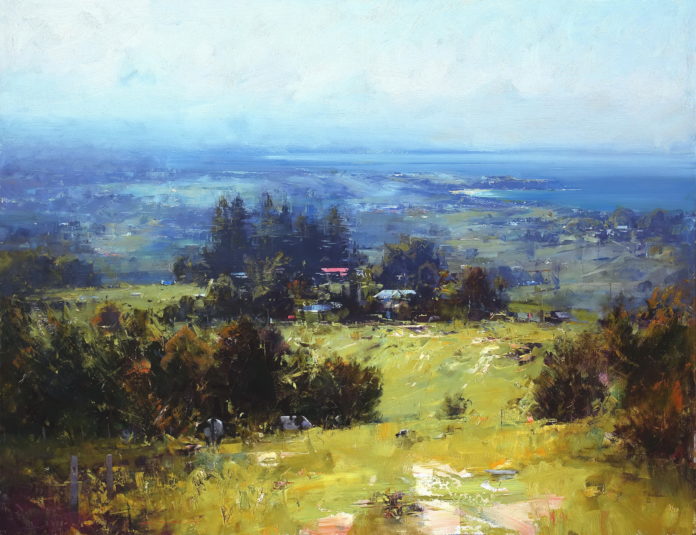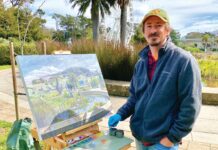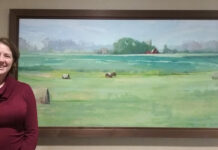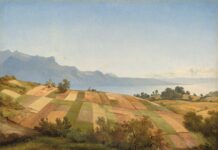“There is something elemental and powerful about responding directly to nature.” Ken Knight shares his approach to plein air painting.
Vantage Points: Part 1
By Ken Knight
(www.kenknight.com.au)
Not all artists simplify their artistic expression to the extent of Rothko, but the importance of simplification and abstraction in a painting is often fundamental to its success.
Matisse’s dictum, that art exists not to represent the world but to create a parallel world—“a condensation of sensations”—is both profound and simple.
A landscape artist can choose any number of techniques in responding to his subject. I favour the plein air approach. I find that this pure contact with nature allows a directness of vision, and facilitates freshness, excitement, and passion.
There is something elemental and powerful about responding directly to nature. All senses are on overload. There is an honesty and strength about works produced outside, and these paintings have an openness and freedom that can easily be recognised.
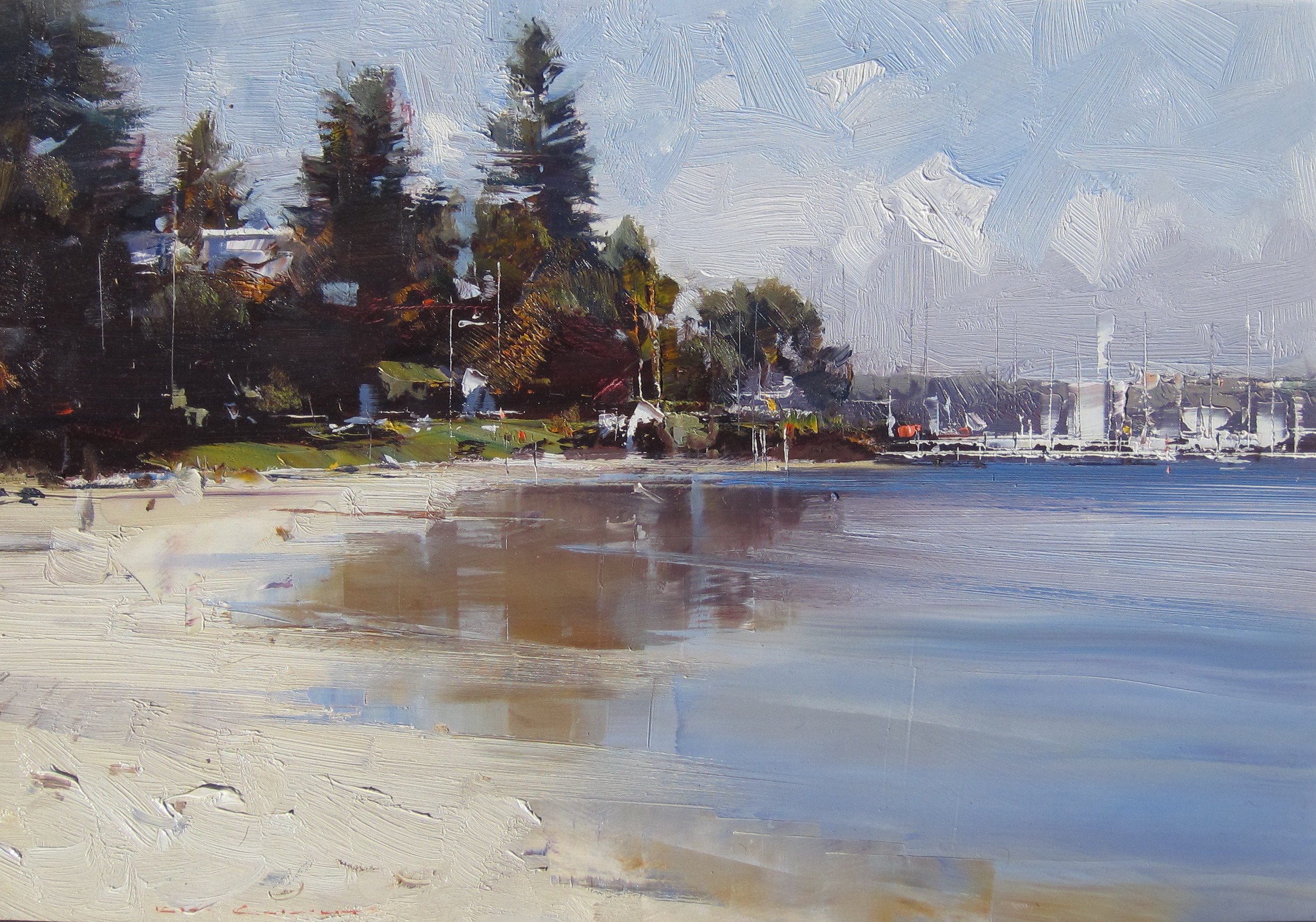
Picture-making is not only about painting what you see, but importantly about what you feel. I find that paintings I do from photographs are devoid of emotion, and the resulting works often lack spontaneity and integrity. It is always challenging when one paints in situ; you look around and there is so much information out there it can be overwhelming. I sometimes describe to people that I close one eye and blur the other when I paint. The justification for this approach is simple: to remove initially the often small and distracting details that can compromise the big picture.
The necessity of prioritising elements within the landscape in deciding what to paint, and conversely what not to paint, becomes both a conscious and unconscious part in picture-making. In the end, it becomes instinctual and you have to trust your head and heart in attempting to realize your vision.

Painting en Plein Air: My Approach
I have always embraced the exuberance and frustration of painting en plein air. The great Impressionists painted outside, and their paintings and commitment have provided the foundation for my continued approach in this technique.
Imagination can be highlighted by the visual stimulation of being out in the open. Depending on the weather, subject and your response, the painting can be audacious or sensitive, as there is an ever-changing dialogue between the artist and his work.
I have developed an approach to painting outside based on my demanding expectation of the work. I often find my first painting is tight and tends to be more cautious than I would like. It also tends to be more geographically correct and less visually stimulating. The subject at this stage often dominates my creative thought.
One of the contradictions of painting outside is for the artist not to be overly influenced by motif. It’s not what you look at that’s important, but what you see. I try to use the subject as a springboard for my imagination, more than trying to render it faithfully. Of course it will depend upon the natural layout of the subject, and how much rearranging is required to achieve a pleasing painting based on structure and design.
Consequently, I will normally paint the same subject immediately again. I may repeat the process another four or six times. I do this not because I want to replicate the first painting, but because the subject offers so much more than I was able to put down in the first painting.
I feel I can always improve on this initial painting, as endless creative possibilities are invariably revealed in the process of completing it. Importantly, it also takes away the preciousness of this first painting. Being aware that you are going to do another one or two paintings of the same subject will allow you to take more risks. The emphasis in putting paint down shifts from being tentative and cautious to being creative and thinking outside the square.
I always feel more freedom and less inhibition employing this mindset. Paintings tend to flow freely, are more succinct and enjoy more vigour.
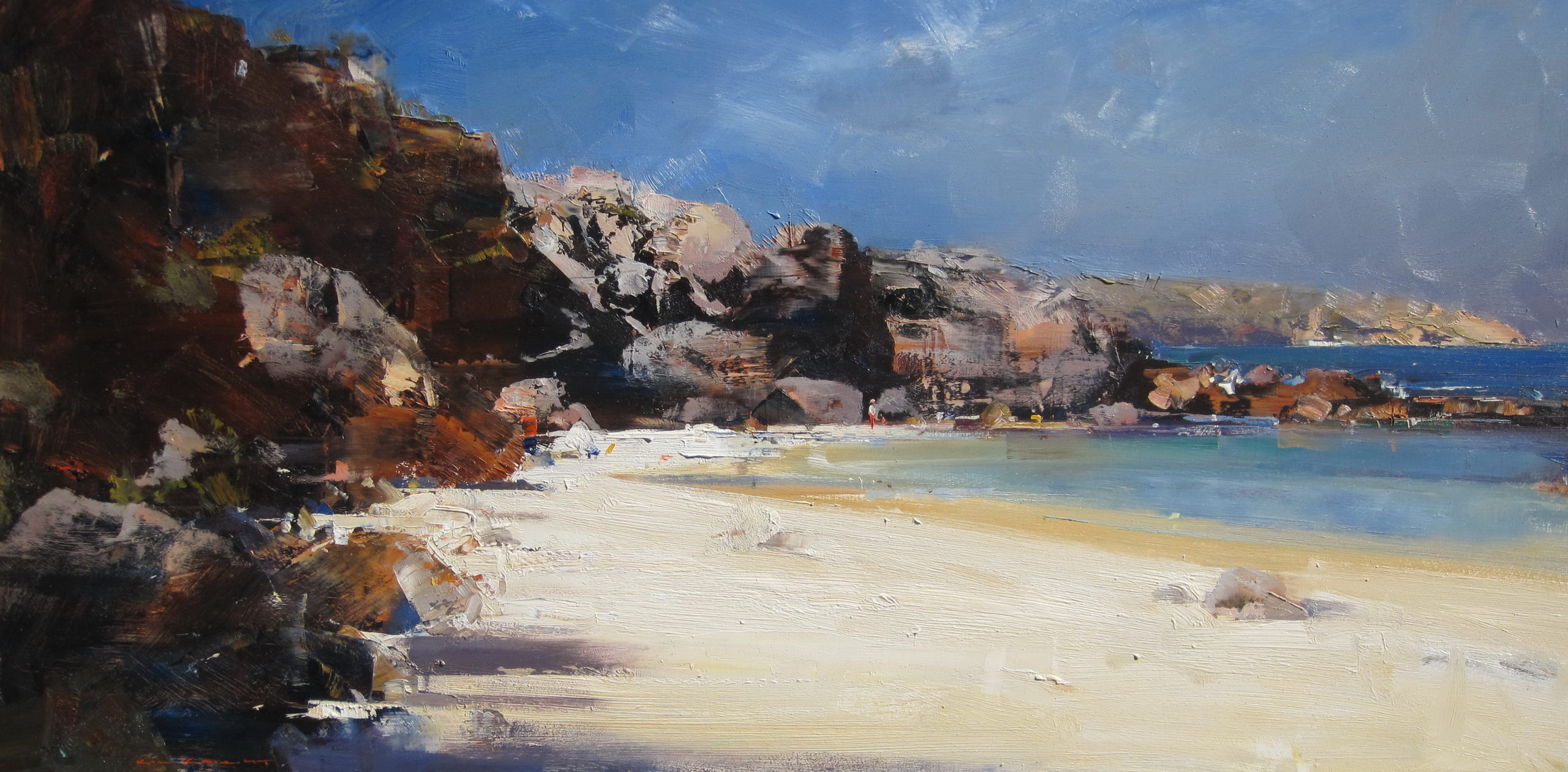
This extended painting session may go from four to six hours, and is intensive and exhausting in the emotional and physical energy that is required. However, I find it very interesting that each painting has its own identity, and the later works are less restrained by topography and more inclined to be creative and gestural. Happy accidents seem to occur when the paint is flowing freely and the brain is thinking laterally.
There is great value in not realizing every part of the painting. We see the world based on selective perception. Unlike photography, we do not see every part of the world in focus.
When we are introduced to someone, for example, we normally look at the person’s face, and at that time are unaware of the details behind the person. Likewise, a good painting should also demonstrate selective perception and not have every part explained in detail. Lost and found in a painting adds mystery, dynamism and seduction—a painting that reveals something a little different each time it is viewed is inherently more satisfying than something over-baked or having too much information. The power of suggestion is something many artists underutilize.
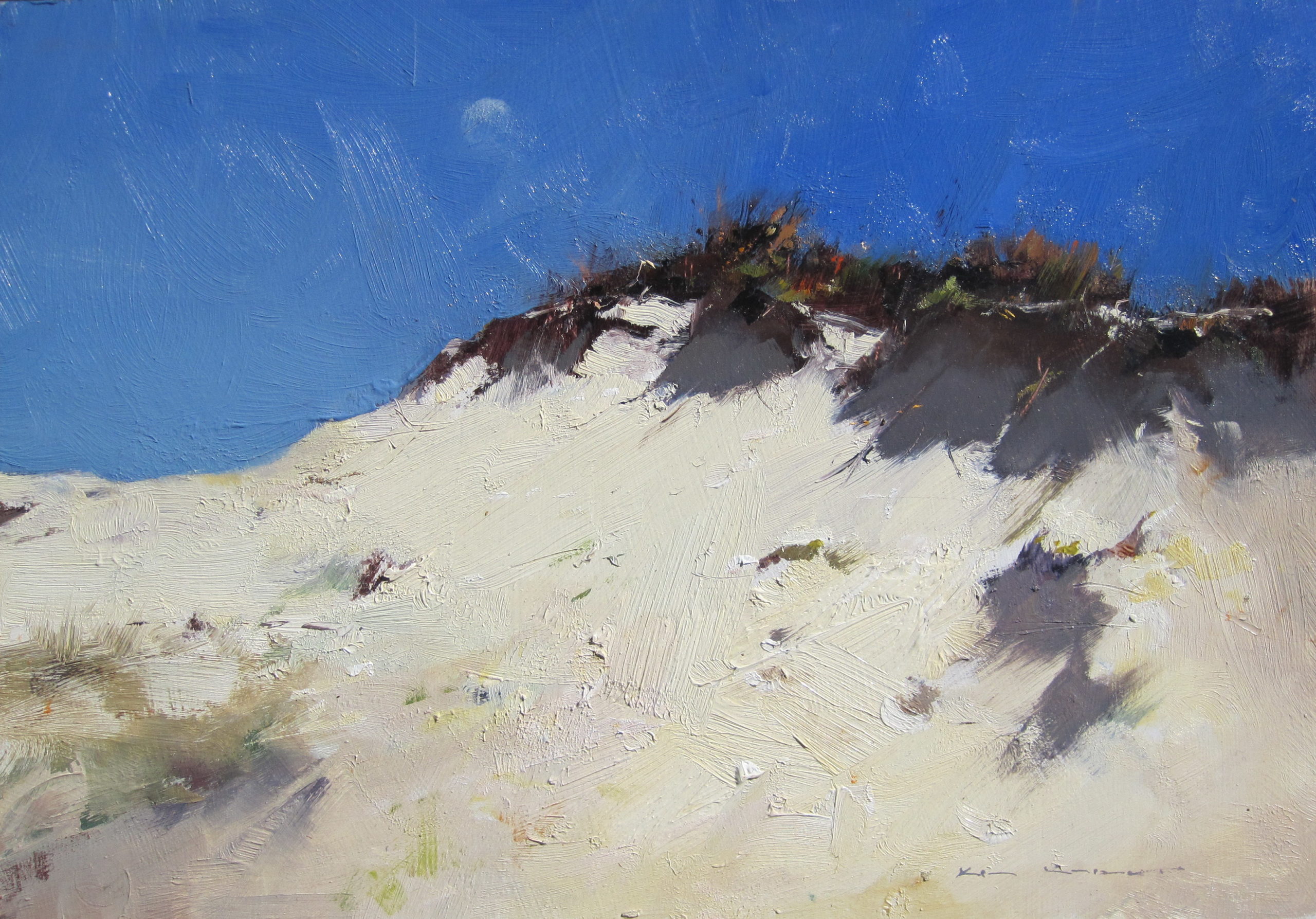
Stay tuned for Part II of this article, in which Ken Knight takes us through his Waterhole Series…
On View:
KEN KNIGHT – ‘FRONTIER’ EXHIBITION
Through March 20, 2022
Rochfort Gallery
317 Pacific Highway, North Sydney 2060
Visit EricRhoads.com to find out all the amazing opportunities for artists through Streamline Publishing, including:
– Online art conferences such as Plein Air Live
– New video workshops for artists
– Incredible art retreats
– Educational and fun art conventions, and much more.
> Subscribe to Plein Air Today, a free newsletter for artists
> Subscribe to Plein Air Magazine so you never miss an issue

